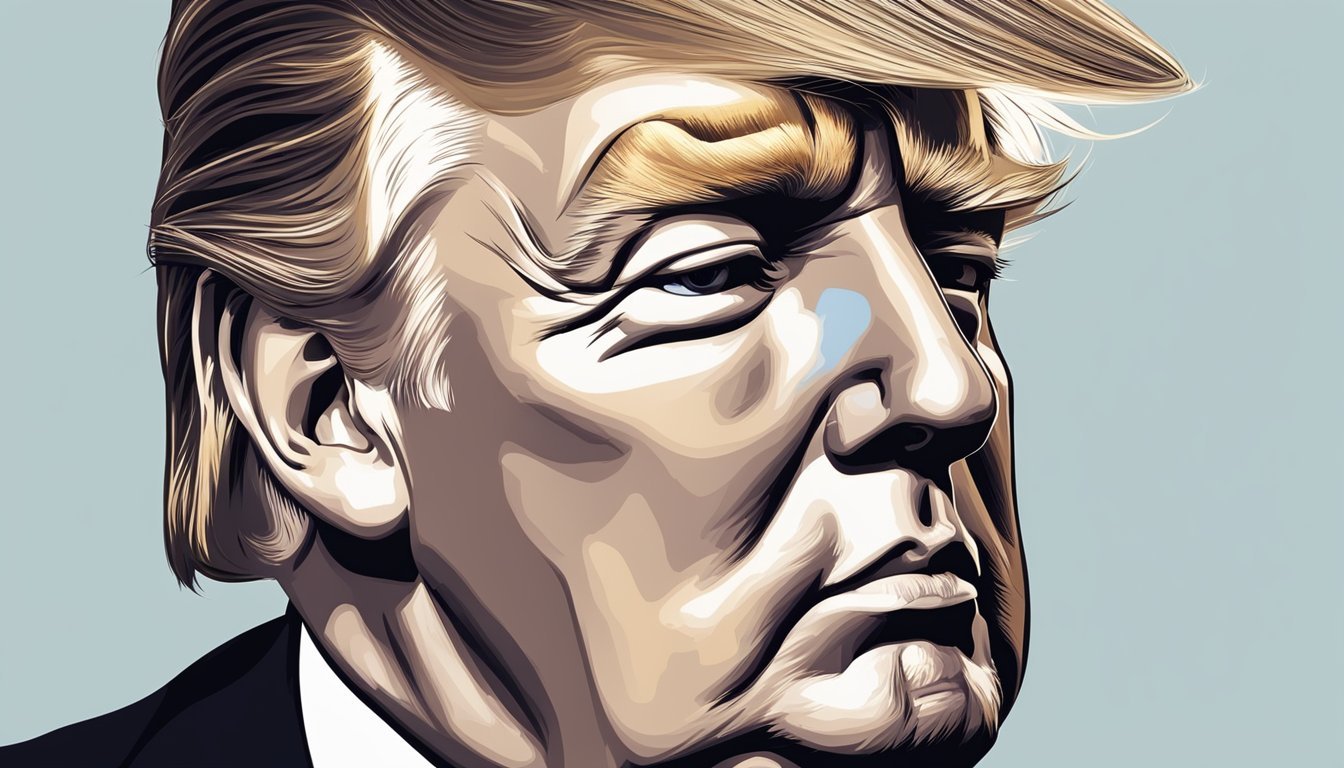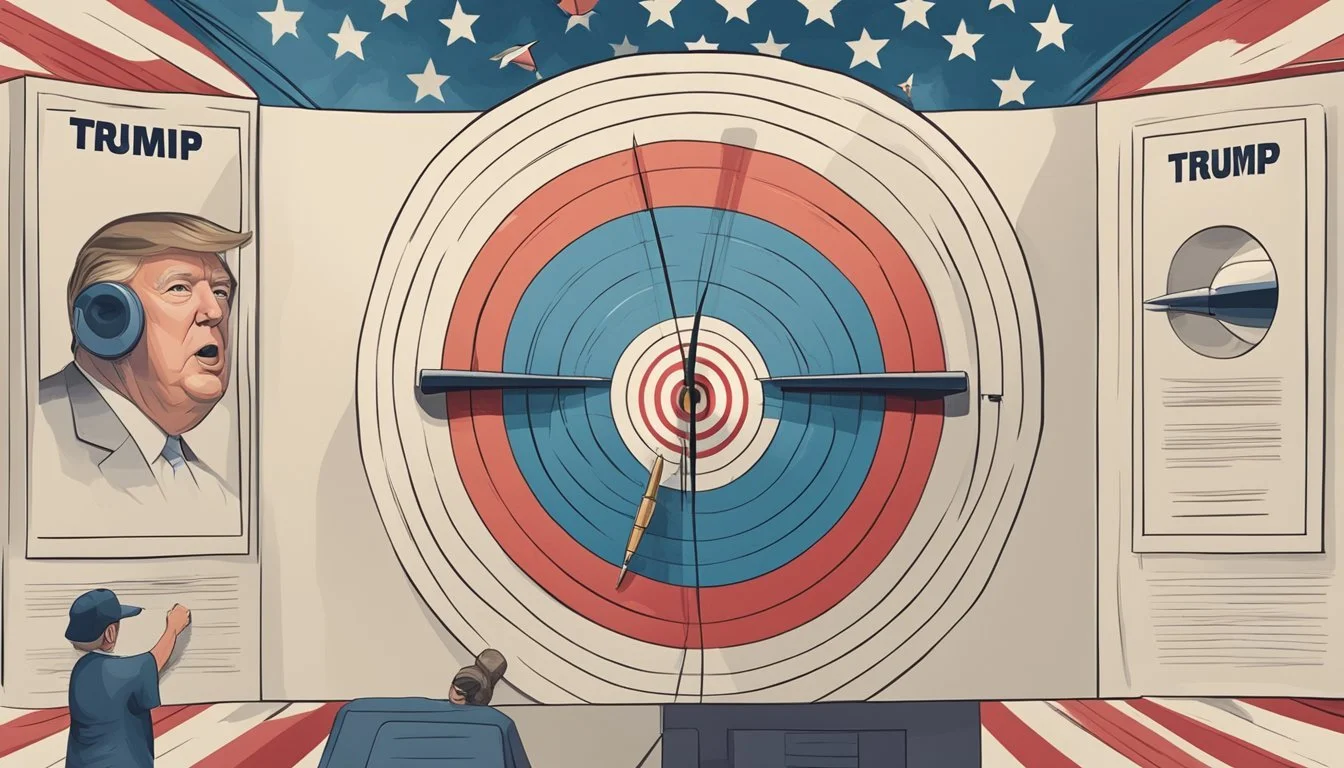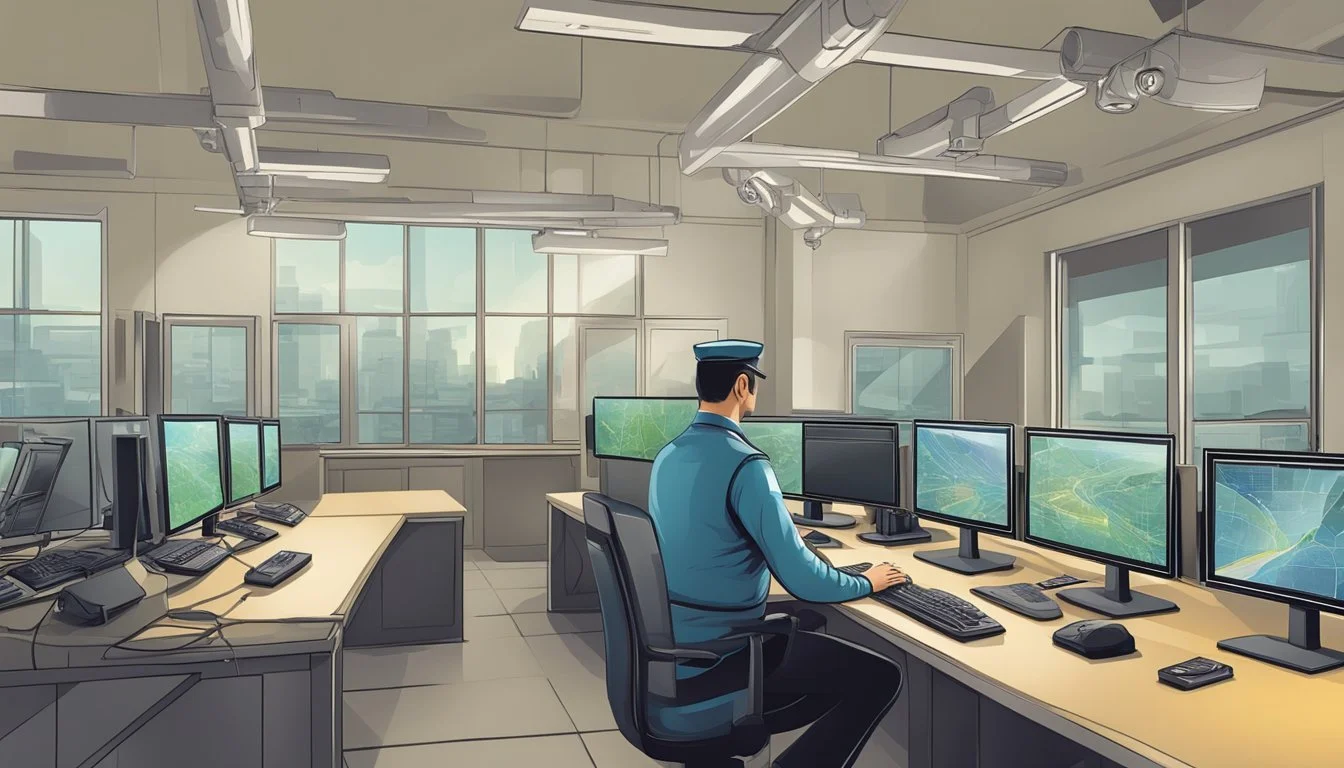Presidential Conversation Overheard at Public Event
Controversial Photo Sparks Online Debate
On July 13, 2024, former President Donald Trump was shot in the upper part of his right ear during a rally in Butler, Pennsylvania. The incident shocked the nation and reignited debates about political violence and security at campaign events.
Trump suffered a minor injury to his ear when a bullet fired by 20-year-old Thomas Matthew Crooks grazed him during his speech. The shooter, positioned on a nearby rooftop, fired eight rounds from an AR-15-style rifle before being apprehended. Tragically, one audience member was killed and two others were critically injured in the attack.
In the aftermath, photos and videos of Trump's injury circulated widely on social media and news outlets. The former president addressed the incident on Truth Social, confirming he had been hit and emphasizing the seriousness of the situation. This event has prompted increased scrutiny of security measures at political rallies and renewed discussions about the potential dangers faced by public figures in today's polarized climate.
Donald Trump's Public Image and the Media
Donald Trump's relationship with the media has been tumultuous and complex. His rise to political power, contentious interactions with news outlets, and use of social media have shaped his public image in unprecedented ways.
Rise to Political Prominence
Donald Trump's ascent to political stardom began long before his presidential campaign. His business ventures and reality TV fame laid the groundwork for his public persona. The media played a crucial role in amplifying Trump's voice during the 2016 election cycle.
His provocative statements and unorthodox campaign style garnered extensive coverage. This media attention, both positive and negative, helped Trump stand out in a crowded field of candidates.
Trump's ability to dominate news cycles became a defining feature of his political strategy. He leveraged his celebrity status and media savvy to maintain a constant presence in the public eye.
Media Relations and Coverage
Trump's presidency marked a significant shift in White House-media dynamics. He often labeled unfavorable coverage as "fake news" and publicly criticized journalists and news organizations.
This combative approach led to tense press briefings and heated exchanges with reporters. Some media outlets faced restricted access to White House events and information.
Trump's supporters viewed his media battles as a necessary challenge to perceived biases. Critics argued his attacks undermined press freedom and public trust in journalism.
The media's coverage of Trump remained extensive throughout his term, with fact-checking becoming a prominent feature of political reporting.
Truth Social and Communication Strategy
After leaving office, Trump launched Truth Social, his own social media platform. This move came in response to his suspension from major platforms like Twitter and Facebook.
Truth Social aims to provide Trump and his supporters with a direct communication channel. The platform allows him to bypass traditional media filters and maintain his online presence.
Trump's posts on Truth Social often make headlines, demonstrating his ongoing influence on public discourse. The platform has become a key tool in his political strategy and fundraising efforts.
Critics argue Truth Social creates an echo chamber, while supporters see it as a bastion of free speech. The platform's impact on Trump's public image and political future remains a subject of debate among pundits and analysts.
The Incident at Butler Rally
The assassination attempt on Donald Trump at a rally in Butler, Pennsylvania on July 13, 2024 shocked the nation. The former president survived with a minor ear injury after being shot while speaking to supporters.
Overview of the Butler, Pennsylvania Event
Donald Trump was holding a campaign rally in Butler, Pennsylvania as the presumptive Republican nominee for the 2024 presidential election. The open-air event attracted thousands of supporters eager to hear Trump speak.
Security measures were in place, with Secret Service agents positioned around the stage. Trump took the podium in the early evening to address the crowd.
Midway through his speech, shots suddenly rang out. Secret Service agents immediately rushed to protect Trump as chaos erupted among attendees.
Reports of a Shooting at the Rally
Witnesses described hearing multiple gunshots and seeing Trump stumble on stage. Video footage showed the former president being quickly ushered away by security personnel.
Trump had blood visible on his face and ear as he was escorted to safety. Initial reports indicated he had been shot in the upper right ear.
One rally attendee was seen falling to the ground, later confirmed dead from gunshot wounds. Panic spread through the crowd as people fled the area.
A witness reported seeing a man with a rifle on a nearby rooftop shortly before the shooting began. Law enforcement quickly moved to secure the perimeter and locate the shooter.
Investigation by Law Enforcement
The FBI and Secret Service immediately launched a joint investigation into the assassination attempt. They cordoned off the rally site to collect evidence and interview witnesses.
Agents combed through security camera footage to identify the shooter and determine how they accessed the area. Ballistics tests were conducted on recovered bullet fragments.
The suspect was identified as Thomas [last name withheld], who was shot and apprehended by law enforcement at the scene. Investigators searched his home and electronic devices for potential motives or connections to extremist groups.
Trump was taken to a nearby hospital for treatment of his ear wound. He was released later that evening after receiving medical care.
Analyses of Assassination Attempts and Political Violence
The attempt on Donald Trump's life marked a stark escalation in political tensions. It highlighted ongoing concerns about violence against public figures and its broader societal impacts.
Historical Context of Political Violence
Political violence has a long history in the United States. Assassinations and attempts have targeted presidents, lawmakers, and activists. Notable incidents include the murders of Abraham Lincoln, John F. Kennedy, and Martin Luther King Jr.
The 1960s and 1970s saw a surge in political violence. This period witnessed the assassinations of Robert F. Kennedy and Malcolm X. Bombings and other attacks became more frequent.
In recent decades, violence has often taken the form of mass shootings. The 2011 attack on Congresswoman Gabrielle Giffords shocked the nation. It underscored the vulnerability of elected officials.
Psychological Impact on Public Figures
Assassination attempts can profoundly affect targeted individuals. Survivors often experience post-traumatic stress disorder (PTSD). They may struggle with anxiety, hypervigilance, and trust issues.
Public figures may alter their behavior after such incidents. Some become more cautious in public appearances. Others may use the experience to bolster their public image or political message.
The Trump ear wound became a rallying point for his supporters. It symbolized his perceived resilience in the face of adversity.
Family members of targeted individuals also face psychological challenges. They may experience secondary trauma and heightened fears for their loved one's safety.
Reaction from Political Figures and Parties
The attempted assassination of Trump elicited varied responses across the political spectrum. Many political figures, regardless of party, condemned the violence. They emphasized the importance of peaceful political discourse.
Some Republicans used the incident to criticize their opponents. They accused Democrats of fostering a climate of hostility towards conservatives.
Democratic leaders expressed sympathy for Trump while distancing themselves from the attacker's actions. They called for unity and a reduction in inflammatory rhetoric.
Congress debated enhanced security measures for political candidates and events. Some lawmakers pushed for stricter gun control laws in response to the incident.
The Republican Party rallied around Trump, portraying him as a survivor of political persecution. This narrative resonated with his base and temporarily boosted his campaign momentum.
Medical Interpretations and Health Concerns
The gunshot wound to Donald Trump's ear raised questions about his immediate medical treatment and potential long-term effects. Medical experts weighed in on the injury's severity and implications for the former president's health.
Initial Medical Response and Ronny Jackson's Role
Ronny Jackson, Trump's former physician, provided insights into the initial medical response. He stated Trump was recovering as expected from the ear wound. The medical team likely focused on assessing the extent of damage, controlling bleeding, and preventing infection.
Jackson's involvement suggested continuity in Trump's medical care. His familiarity with Trump's health history could have aided in tailoring treatment to the former president's specific needs.
Revelation of Medical Records
Trump's medical team did not immediately release detailed records of his condition. This lack of transparency fueled speculation about the injury's severity. Experts stressed the importance of comprehensive medical documentation for gunshot wounds.
The FBI confirmed a bullet struck Trump's ear, potentially fragmenting into smaller pieces. This information hinted at the complexity of the injury and the need for thorough medical assessment.
Long-term Health Implications
Medical professionals considered potential long-term effects of the ear injury. Concerns included possible hearing loss, balance issues, or nerve damage. The presence of shrapnel could complicate recovery and require ongoing monitoring.
Experts emphasized the need for follow-up care to address any lasting impacts. Trump's age and overall health status were factors in assessing his long-term prognosis. The incident highlighted the importance of comprehensive medical care for high-profile figures facing security risks.
Security Measures and Protocols
The assassination attempt on Donald Trump highlighted critical gaps in protective measures. Enhanced security protocols and a thorough review of existing procedures became imperative in its aftermath.
The Secret Service's Response to the Incident
The U.S. Secret Service faced intense scrutiny following the shooting. Agents immediately launched a comprehensive investigation into how the assailant gained rooftop access. Security perimeters were expanded, and vetting procedures for event attendees were tightened.
The agency implemented stricter protocols for advance teams scouting locations. This included more rigorous inspections of buildings surrounding event venues. Coordination with local law enforcement was intensified to ensure comprehensive security coverage.
Enhancements in Protective Measures
In response to the incident, the Secret Service bolstered its protective details. Additional agents were assigned to high-profile protectees, including former presidents. Advanced surveillance technology was deployed to monitor potential threats more effectively.
Sniper teams were positioned strategically at events to counter long-range threats. The agency also invested in cutting-edge ballistic protection equipment for VIPs. Training programs for agents were updated to address emerging security challenges.
Collaboration with intelligence agencies was strengthened to improve threat assessment capabilities. The Secret Service also worked closely with event organizers to redesign stage layouts and crowd management strategies.
Public Reaction and the Aftermath
The shooting of Donald Trump at a campaign rally in Butler, Pennsylvania sparked intense reactions across the political spectrum and raised concerns about security at future events. Public figures, family members, and political allies weighed in on the incident.
Statements by Family Members
Eric Trump swiftly issued a statement expressing relief that his father survived the attack. He thanked the Secret Service for their quick response and called for unity in the wake of the incident. Melania Trump made a rare public appearance to visit her husband in the hospital, later releasing a brief statement asking for privacy during his recovery.
Donald Trump Jr. took to social media to denounce political violence and defend his father's campaign message. Ivanka Trump and Jared Kushner maintained a lower profile, issuing a joint statement expressing gratitude for the outpouring of support.
The Political Fallout
The shooting prompted debates about the increasingly hostile political climate in the United States. Many Republican leaders rallied around Trump, condemning the attack as an assault on democracy. Some called for increased security measures at political events.
Democrats universally condemned the violence while carefully distancing themselves from the shooter's motives. President Biden made a televised address urging calm and denouncing political violence of any kind.
The incident reignited discussions about gun control and the tone of political rhetoric. Polls showed a temporary surge in sympathy for Trump among some voters.
Impact on Future Campaign Rallies
In the immediate aftermath, Trump's campaign suspended all public events pending a security review. When rallies resumed, they featured enhanced screening procedures and a larger security presence.
The Republican National Committee announced changes to its convention plans, prioritizing additional safety measures. Some smaller venues were swapped for larger arenas to accommodate security needs.
Trump himself initially appeared at events via video link before returning to in-person rallies. His first post-shooting appearance drew record crowds, with supporters eager to show solidarity.
Campaign strategists debated how to balance security concerns with Trump's preference for direct voter engagement. Some rallies adopted a town hall format to allow for more controlled environments.
Role of Digital Media and Information Dissemination
Digital platforms played a crucial role in spreading news about Donald Trump's ear injury. Social media and video sharing sites became key sources for updates and analysis.
Spread of Information through Social Media
Social media platforms rapidly circulated news of Trump's ear wound. Twitter saw an explosion of posts within minutes of the incident. Users shared eyewitness accounts, photos, and video clips capturing the moment.
Trump's own Truth Social platform became a primary outlet for his statements. He posted updates on his condition and recovery directly to supporters. This direct communication bypassed traditional media filters.
Facebook and Instagram users widely shared and discussed news articles about the shooting. Fact-checkers worked to combat misinformation and conspiracy theories that emerged.
Analysis of Videos and Televised Reports
Television networks provided continuous coverage, analyzing footage frame-by-frame. Experts examined videos to reconstruct the sequence of events. Slow-motion replays highlighted the exact moment the bullet struck Trump's ear.
News channels invited medical professionals to assess the injury's severity based on available footage. Body language experts scrutinized Trump's reaction and subsequent appearances for signs of lasting effects.
Online video platforms saw a surge in uploads of amateur footage from rally attendees. These clips offered additional angles and perspectives not captured by official media cameras.
Legal Implications and Judiciary Proceedings
The shooting incident involving Donald Trump's ear led to a series of legal and investigative actions. Federal authorities and the courts became involved to determine the facts and potential consequences of the event.
The FBI Involvement and Public Statements
The FBI took charge of investigating the shooting incident. They conducted a thorough analysis of the evidence collected at the scene. FBI Director Christopher Wray issued a statement confirming that a bullet from the shooter's rifle had struck Trump's ear. This official announcement clarified earlier speculations about the nature of Trump's injury.
The Bureau's forensic team examined ballistic evidence and witness accounts. They determined that the bullet, either whole or fragmented, originated from the deceased assailant's weapon. This finding supported Trump's initial claim about being shot.
Court Hearings and Legal Outcomes
Following the FBI's investigation, several court hearings took place. These proceedings aimed to address various legal aspects of the incident. The courts examined potential security breaches and any lapses in protective measures.
Testimonies from Secret Service agents and eyewitnesses were presented. Legal experts debated the implications for future security protocols. The hearings also considered potential charges against individuals who may have been indirectly involved in the incident.
Congress held separate hearings to review the incident. They questioned Christopher Wray about the FBI's findings and response procedures. These sessions focused on improving security measures for high-profile political figures.
Global Perspective on the Incident
The shooting of Donald Trump at a Pennsylvania rally sparked immediate and widespread reactions from world leaders. The incident drew comparisons to other political attacks and raised concerns about security for high-profile figures globally.
International Response to the Butler Event
Leaders from various countries swiftly condemned the assassination attempt on Donald Trump. Canadian, Israeli, British, and Russian officials expressed shock and offered support. European leaders also voiced their solidarity with the former U.S. President.
Many emphasized the importance of protecting democratic processes and political figures. Some called for increased security measures at campaign events worldwide. The incident prompted discussions on the risks faced by politicians in the current global climate.
Comparative Analysis with Other Global Incidents
The attack on Trump drew parallels to other political shootings in recent history. Analysts compared it to attempts on world leaders like Ronald Reagan and Shinzo Abe. These events highlighted the ongoing threat of violence against public figures.
Security experts noted similarities in perpetrator profiles and attack methods. They stressed the need for improved protective measures at political gatherings. The incident reignited debates on balancing public access with safety concerns for politicians.
Global media coverage focused on the potential impact on U.S. politics and international relations. Many speculated about the shooting's effect on Trump's campaign and the upcoming election.
Cultural Representation and Public Discourse
The alleged shooting incident involving Donald Trump's ear sparked widespread discussions and creative expressions across American society. It left an indelible mark on public conversations and influenced various forms of artistic and stylistic representations.
The Incident's Influence on Public Conversations
The reported ear injury became a focal point for political debates and media scrutiny. News outlets extensively covered the story, leading to increased public interest in presidential security measures. Social media platforms buzzed with theories and memes related to the incident.
Political commentators analyzed potential impacts on Trump's campaign and public image. The event prompted discussions about the risks faced by political figures and the need for enhanced protection protocols. It also raised questions about the role of sensationalism in news reporting and its effects on public perception.
Portrayal in Art, Fashion, and Style
Artists incorporated the ear incident into various forms of expression. Political cartoonists created satirical depictions, often exaggerating the injury for comedic effect. Street artists produced murals and graffiti art referencing the event in urban settings.
Fashion designers introduced ear-themed accessories and clothing items, capitalizing on the incident's notoriety. Some created statement pieces like ear-shaped brooches or earrings resembling bandages. Hairstylists reported an increase in requests for styles that prominently displayed the ears, dubbed the "Trump ear reveal" trend.
Musicians penned songs referencing the incident, ranging from serious political commentary to humorous parodies. The event also inspired performance artists, who incorporated ear-related themes into their acts.



